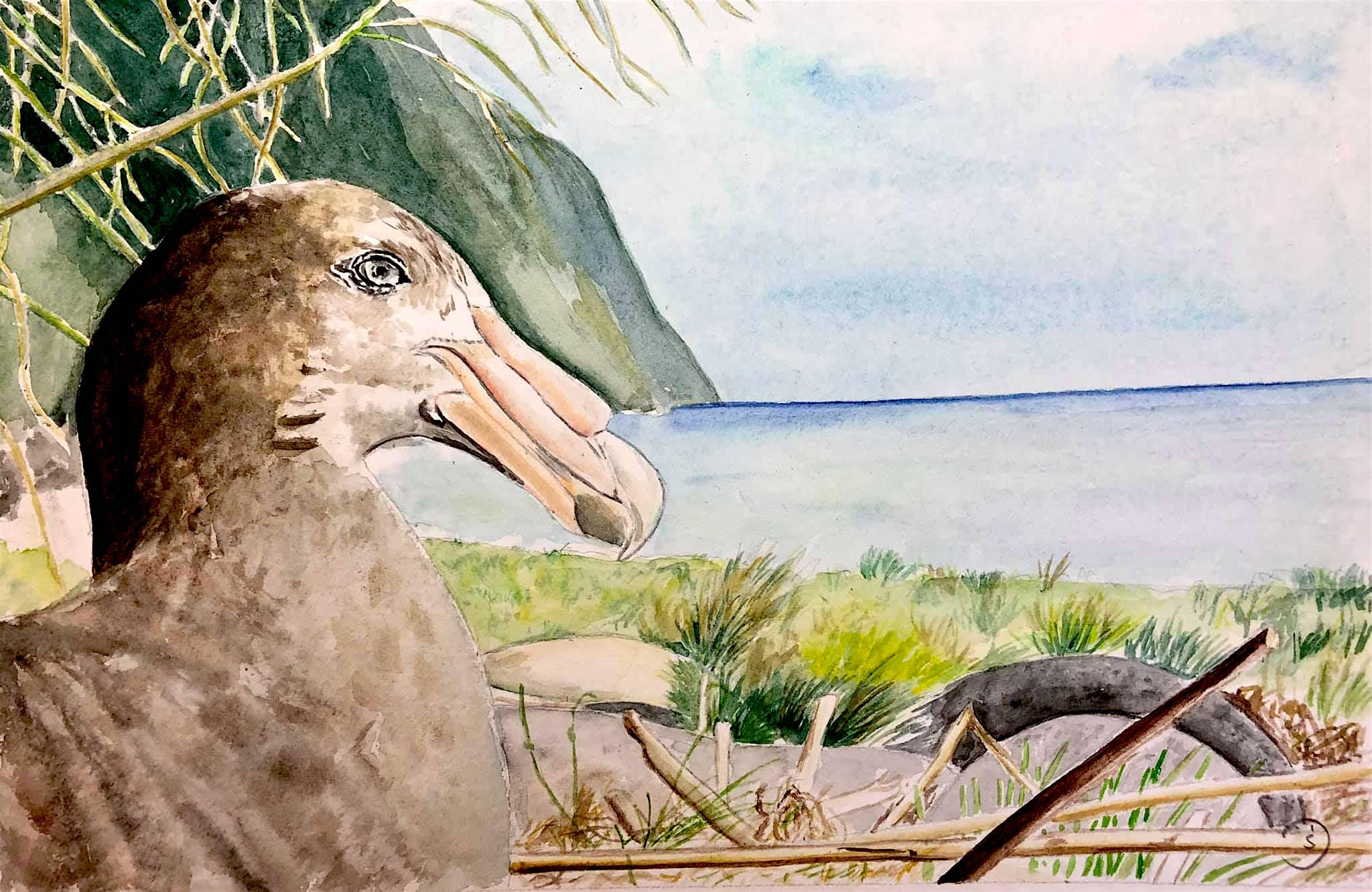
A Southern Giant Petrel on Gough Island, watercolour by Susanne Durchholz, after a photograph by Michelle Risi
Peter Ryan (FitzPatrick Institute of African Ornithology, University of Cape Town, Rondebosch, South Africa) and Stefan Oppel (RSPB Centre for Conservation Science, Cambridge, UK) have published in the open-access journal Marine Ornithology on the winter presence of Southern Giant Petrels Macronectes giganteus on Gough Island.
The paper’s abstract follows:
“Southern Giant Petrels Macronectes giganteus are partial migrants, but the proportion of adult males and females that visit the colony on Gough Island during winter is poorly defined. A better understanding of winter colony attendance is important to predict the possible impact of non-target mortality during restoration efforts involving poison baiting to eradicate introduced mammals. We repeatedly checked the individual identity of all giant petrels attending the largest breeding colony on Gough Island for rings during April-May 2021. Although the maximum number of individually identifiable ringed adults in a single check was 202, overall, 353 ringed adults were recorded, including almost 90% of the individuals that bred in 2020. Males were more likely to be present than females, but the ratio of males to females decreased from the end of April (3.24:1) to the latter half of May (1.25:1). Many birds were paired with their previous breeding partners by the end of May, despite egg laying not starting until late August. Our observations indicate that most adult Southern Giant Petrels are present at their breeding colonies on Gough Island 3-4 months before breeding, and are thus potentially susceptible to non-target poisoning during mammal eradication operations.’
Reference:
Ryan, P.G. & Oppel, S. 2022. Winter colony attendance by adult Southern Giant Petrels Macronectes giganteus: implications for rodent eradications. Marine Ornithology 50: 1-4.
John Cooper, ACAP Information Officer, 18 February 2022

 Français
Français  English
English  Español
Español